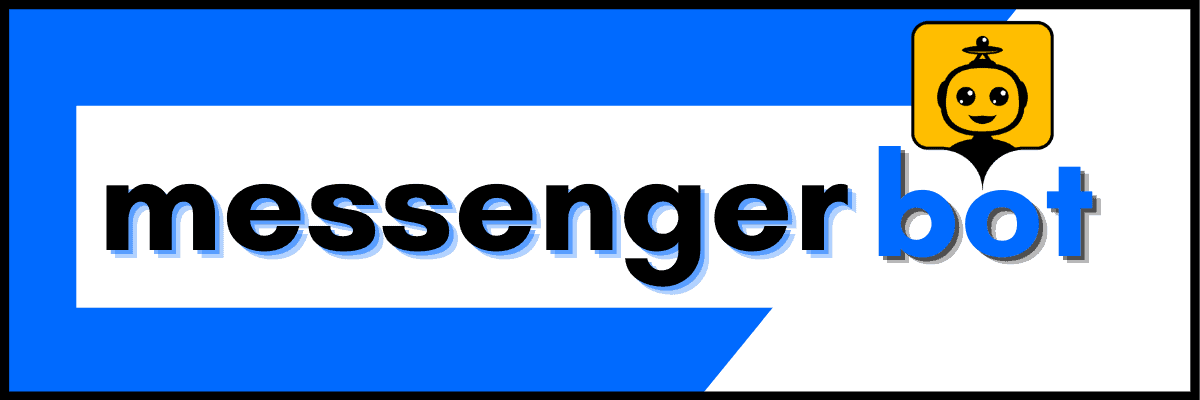In today’s fast-paced digital landscape, businesses are seeking innovative solutions to elevate their customer engagement and provide seamless experiences. Conversational AI solutions have emerged as a game-changer, revolutionizing how companies interact with their customers. By harnessing the power of artificial intelligence, conversational AI platforms enable natural language interactions, allowing for intuitive and personalized communication. Whether it’s intelligent virtual assistants or interactive conversational AI services, these cutting-edge technologies are transforming customer service, sales, and support processes, driving operational efficiency and enhancing customer satisfaction. As the demand for conversational AI solutions continues to soar, it’s essential for businesses to stay ahead of the curve and embrace this transformative technology to remain competitive and deliver exceptional customer experiences.
What are Conversational AI Solutions?
Conversational AI Definition
Conversational AI solutions, also known as conversational AI platforms or conversational AI assistants, are advanced artificial intelligence technologies that enable human-like interactions between users and computer systems through natural language processing (NLP) and machine learning (ML) algorithms. These solutions leverage deep learning models to understand and interpret human speech or text inputs, extract the user’s intent, and generate contextually relevant responses, mimicking natural human conversations.
Conversational AI solutions can be categorized into two main types: text-based (chatbots) and voice-based (virtual assistants). Text-based conversational AI solutions interact with users through text inputs and outputs, typically in messaging platforms or website chat interfaces. Voice-based solutions, on the other hand, utilize speech recognition and natural language understanding to enable voice interactions, commonly found in virtual assistants like Siri, Alexa, and Google Assistant.
Conversational AI Technology and Tools
The key components of conversational AI solutions include:
- Natural Language Processing (NLP): NLP algorithms enable the AI system to understand and interpret human language inputs, including syntax, semantics, and contextual meaning.
- Intent Recognition: By analyzing the user’s input, conversational AI solutions can identify the underlying intent or goal behind the query or statement.
- Dialog Management: This component manages the flow of the conversation, determining the appropriate response based on the user’s intent and the conversational context.
- Knowledge Base: A comprehensive knowledge base or information repository is essential for conversational AI solutions to retrieve relevant information and generate accurate responses.
- Machine Learning (ML) and Deep Learning (DL): ML and DL algorithms enable conversational AI solutions to continuously learn and improve from user interactions, adapting to new contexts and enhancing their understanding and response capabilities.
The benefits of conversational AI solutions include improved customer experience, increased operational efficiency, 24/7 availability, and the ability to handle multiple conversations simultaneously. These solutions are widely adopted across various industries, such as customer service, e-commerce, healthcare, finance, and education, enabling seamless and personalized interactions between users and businesses or organizations.

What problem does conversational AI solve?
A. Enhancing Customer Experience
Conversational AI plays a pivotal role in revolutionizing customer experiences by enabling natural language interactions between humans and machines. By understanding and responding to customer queries in a conversational manner, it reduces frustration and increases satisfaction. Conversational AI assistants can engage customers in a friendly, personalized way, providing seamless support and addressing their needs efficiently.
Companies like Brain Pod AI offer advanced multilingual AI chat assistants that can communicate with customers in their preferred languages, breaking down language barriers and enhancing the overall customer experience.
B. Improving Operational Efficiency
Conversational AI systems can handle repetitive, high-volume queries, freeing human agents to focus on more complex issues. This results in increased efficiency and productivity, as routine tasks are automated, allowing for more effective resource allocation. Automation also ensures consistent responses, reducing the risk of human error and improving overall service quality.
Furthermore, conversational AI assistants can operate 24/7, ensuring uninterrupted service and support, even outside business hours. This round-the-clock availability enhances customer satisfaction and can provide a competitive edge in industries where prompt response times are crucial.
III. Is ChatGPT a conversational AI?
A. Understanding ChatGPT’s Capabilities
Yes, ChatGPT is a conversational AI designed for open-ended dialogue. It uses advanced language models and natural language processing to understand and generate human-like responses. Unlike task-specific AI assistants, ChatGPT can engage in freeform conversations on virtually any topic, drawing upon its vast knowledge base to provide substantive and contextually relevant responses.
ChatGPT’s conversational capabilities are driven by its training on an immense corpus of online data, allowing it to grasp complex concepts, recognize nuances, and formulate coherent responses tailored to the conversational flow. Its ability to maintain context and engage in multi-turn exchanges distinguishes it as a truly conversational AI.
Moreover, ChatGPT exhibits key traits associated with conversational AI, such as the ability to understand and generate natural language, interpret context and subtext, and even display elements of emotional intelligence and personality. Its responses often demonstrate a level of reasoning, creativity, and empathy that transcends traditional pattern-matching or rule-based systems, enabling more natural and engaging interactions.
B. Conversational AI vs Generative AI
While ChatGPT is a powerful conversational AI, it’s important to note that it falls under the broader category of generative AI. Generative AI models like ChatGPT are trained to generate human-like text based on the input they receive, allowing them to engage in open-ended dialogue and produce relevant responses.
However, conversational AI is a specific subset of generative AI that focuses on enabling natural, contextual, and engaging conversations with users. Brain Pod AI‘s conversational AI solutions, for instance, are designed to understand the nuances of human communication, maintain context, and provide personalized responses that mimic human-like interactions.
While ChatGPT excels at generating human-like text and engaging in dialogue, Brain Pod AI’s conversational AI platforms are specifically engineered to deliver seamless, contextual, and personalized conversational experiences tailored to various industries and use cases, such as customer support, sales, and marketing.
IV. Which conversational AI is the best?
A. Evaluating Conversational AI Platforms
When it comes to selecting the best conversational AI platform, there is no one-size-fits-all solution. The ideal choice depends on your specific business needs, use case, and integration requirements. However, some key factors to consider when evaluating conversational AI platforms include:
- Natural Language Processing (NLP) Capabilities: A robust conversational AI platform should have advanced NLP capabilities to accurately understand and interpret user inputs, handle complex queries, and provide contextual and natural responses.
- Integration and Scalability: The platform should seamlessly integrate with your existing systems, applications, and data sources. Additionally, it should be scalable to accommodate growing user demands and handle high-volume conversations.
- Customization and Personalization: The ability to customize and personalize the conversational experience based on your brand’s unique requirements, industry-specific language, and user preferences is crucial.
- Multi-channel Support: A versatile conversational AI platform should support multiple communication channels, such as websites, mobile apps, messaging platforms, and voice assistants, to provide a consistent and seamless experience across all touchpoints.
- Analytics and Reporting: Comprehensive analytics and reporting capabilities are essential for tracking performance, identifying areas for improvement, and optimizing the conversational AI experience.
- Security and Privacy: As conversational AI platforms handle sensitive user data, it’s crucial to ensure they adhere to industry-specific security and privacy standards, such as GDPR, HIPAA, or PCI-DSS.
Additionally, it’s essential to consider the platform’s ease of use, developer tools, and support resources, as well as the vendor’s track record, industry expertise, and overall cost-effectiveness.
B. Top Conversational AI Companies
When evaluating the best conversational AI platform, several factors come into play, including natural language processing (NLP) capabilities, integration with existing systems, scalability, and customization options. Based on industry reports and expert analysis, some of the leading conversational AI platforms in 2024 include:
- Google Cloud Dialogflow: Leveraging Google’s advanced NLP and machine learning technologies, Dialogflow offers robust conversational experiences across multiple channels, including voice, text, and virtual assistants. Its natural language understanding (NLU) and context management capabilities enable seamless, human-like interactions.
- Amazon Lex: Part of Amazon Web Services (AWS), Lex provides a comprehensive conversational AI platform with advanced NLU, automatic speech recognition (ASR), and text-to-speech capabilities. Its deep integration with AWS services and pre-built models make it a popular choice for enterprises.
- IBM Watson Assistant: IBM’s conversational AI platform utilizes the power of Watson’s NLP and machine learning capabilities. It offers advanced features like multi-turn conversations, context-aware responses, and seamless integration with various applications and services.
- Microsoft Bot Framework: Developed by Microsoft, this platform enables developers to build, deploy, and manage intelligent conversational bots across multiple channels. It supports various programming languages and integrates with Azure Cognitive Services for NLP and speech recognition.
- Rasa: An open-source conversational AI platform, Rasa is known for its robust NLU and dialogue management capabilities. It offers flexibility and customization options, making it a popular choice for developers and enterprises alike.
- Pandorabots: This platform specializes in creating and deploying conversational AI agents for customer service, e-commerce, and enterprise applications. It offers advanced NLP and machine learning capabilities, along with seamless integration options.
- Nuance Conversational AI: Nuance’s conversational AI platform combines advanced NLP, speech recognition, and biometrics technologies, enabling secure and intelligent conversational experiences across multiple channels.
- Rulai: Rulai’s conversational AI platform focuses on enterprise-grade solutions, offering advanced NLU, context management, and seamless integration with existing systems. It also provides robust analytics and reporting capabilities.
- Inbenta: With a strong focus on customer service and support, Inbenta’s conversational AI platform offers advanced NLU, knowledge management, and omnichannel capabilities for creating intelligent virtual assistants.
- Haptik: Haptik’s platform combines conversational AI with process automation, enabling enterprises to create intelligent virtual assistants for customer service, employee support, and business process optimization.
These platforms leverage the latest advancements in NLP, machine learning, and conversational AI technologies to provide intelligent, human-like interactions across various industries and use cases. The choice ultimately depends on specific requirements, such as the desired features, integration needs, scalability, and industry-specific use cases.
It’s also worth mentioning Brain Pod AI, an emerging player in the conversational AI space. Their platform offers advanced NLU, multi-lingual support, and a range of AI capabilities, including AI chat assistants, AI image generation, and AI writing. While relatively new, Brain Pod AI’s innovative approach and commitment to ethical AI make it a platform to watch in the conversational AI space.
At Messenger Bot, we pride ourselves on being at the forefront of conversational AI innovation. Our platform is designed to seamlessly integrate with popular messaging platforms like Facebook Messenger and Instagram, enabling businesses to boost sales and enhance customer experiences through intelligent, AI-powered conversations.
With our cutting-edge NLP capabilities, multi-lingual support, and seamless integration options, we empower businesses to create highly engaging and personalized conversational experiences that drive tangible results. Additionally, our robust analytics and reporting tools provide valuable insights for continuous optimization and improvement.
Ultimately, the best conversational AI platform for your business will depend on your unique needs, budget, and long-term goals. By carefully evaluating the options and understanding the strengths of each platform, you can make an informed decision that aligns with your conversational AI strategy and delivers exceptional value to your customers.

V. Which is an example of conversational AI?
A. Intelligent Virtual Assistants
Intelligent virtual assistants are among the most well-known examples of conversational AI in action. These AI-powered digital assistants are designed to engage in natural language interactions, understanding and responding to voice commands and queries just as a human would. Some prominent examples include:
- Apple’s Siri: Siri is a virtual assistant integrated into Apple devices like iPhones, iPads, and Macs. It can handle a wide range of tasks, from setting reminders and alarms to answering questions and controlling smart home devices, all through voice commands and conversational interactions.
- Google Assistant: Google’s AI assistant can engage in two-way conversations, understanding and responding to voice commands and queries across various devices and platforms. It can assist with tasks like web searches, scheduling appointments, controlling smart home devices, and more.
- Amazon Alexa: Alexa is a virtual assistant integrated into Amazon’s Echo smart speakers and other compatible devices. It can answer questions, play music, control smart home devices, set reminders, and even make purchases through conversational voice commands.
- Microsoft Cortana: Cortana is Microsoft’s virtual assistant that can assist with tasks like scheduling appointments, setting reminders, answering questions, and more through natural language interactions.
These intelligent virtual assistants leverage advanced natural language processing (NLP) and machine learning capabilities to understand and interpret human speech, enabling seamless conversational interactions. As conversational AI technology continues to evolve, these virtual assistants are becoming increasingly sophisticated, with improved language understanding, contextual awareness, and the ability to handle more complex queries and tasks.
B. Interactive Conversational AI Solutions
Beyond virtual assistants, conversational AI is also being widely adopted in various interactive solutions to enhance customer experiences and streamline business processes. Some notable examples include:
- Chatbots and virtual agents: AI-powered chatbots and virtual agents are designed to simulate human-like conversations and provide personalized assistance to customers across various channels, such as websites, messaging apps, and social media platforms. Companies like Brain Pod AI offer advanced conversational AI platforms that enable businesses to create highly interactive and intelligent chatbots tailored to their specific needs.
- Voice-enabled smart home devices: In addition to virtual assistants, conversational AI powers smart home devices like Amazon Echo and Google Nest Hub. These devices allow users to control various smart home functions, such as lighting, thermostats, and entertainment systems, through natural language voice commands.
- Conversational AI in healthcare: Healthcare providers are increasingly adopting conversational AI solutions to enhance patient experiences and streamline workflows. For instance, AI-powered virtual health assistants can help patients schedule appointments, answer medical queries, and provide personalized health guidance through conversational interactions.
- AI language translation tools: Conversational AI is also powering advanced language translation tools that can facilitate real-time, natural language conversations between individuals speaking different languages. Companies like Brain Pod AI offer multilingual AI chat assistants that can understand and respond in multiple languages, enabling seamless cross-cultural communication.
As these examples illustrate, conversational AI is transforming how we interact with digital interfaces, enabling more natural and intuitive experiences across various industries and applications. By leveraging advanced natural language processing and machine learning capabilities, conversational AI solutions can understand and respond to human language in context, providing personalized assistance and enhancing overall user experiences.
What is the difference between chatbot and conversational AI?
A. Chatbots vs. Conversational AI
The key difference between chatbots and conversational AI lies in their complexity and ability to understand and respond to human interactions.
Chatbots are rule-based systems designed to simulate human conversation by recognizing predefined keywords and providing scripted responses. They operate within a limited domain and have a narrow scope of understanding, making them suitable for basic tasks like answering FAQs or providing simple information. Chatbots lack true language comprehension and cannot handle complex queries or engage in dynamic conversations.
Conversational AI, on the other hand, is an advanced form of artificial intelligence that leverages natural language processing (NLP), machine learning, and contextual understanding to engage in more natural and human-like conversations. Conversational AI systems can understand the intent behind user inputs, maintain context across multiple turns, and provide more intelligent and personalized responses. They can handle complex queries, engage in multi-turn dialogues, and even learn and adapt over time.
Unlike chatbots, conversational AI systems are not limited to predefined scripts or rules. They use deep learning algorithms to understand the nuances of human language, including idioms, slang, and ambiguities. This allows them to interpret user inputs more accurately and provide more relevant and contextual responses. Conversational AI can also leverage data from various sources, such as knowledge bases, APIs, and external services, to enhance its understanding and provide more comprehensive answers.
B. Conversational AI’s Advanced Capabilities
While chatbots are suitable for simple, transactional interactions, conversational AI solutions are designed to handle more complex and nuanced conversations. They can engage in multi-turn dialogues, maintain context, and provide personalized responses based on the user’s intent and preferences.
One of the key advantages of conversational AI is its ability to continuously learn and improve through interactions with users. As the system processes more data, it can refine its language models and better understand the nuances of human communication, leading to more natural and effective conversations over time.
Moreover, conversational AI platforms can integrate with various data sources, APIs, and backend systems, enabling them to access and provide information from multiple sources seamlessly. This integration allows for more comprehensive and accurate responses, enhancing the overall user experience.
In summary, while chatbots are limited to predefined scripts and rules, conversational AI solutions leverage advanced natural language processing and machine learning capabilities to engage in more natural, context-aware, and intelligent interactions with users, making them better suited for complex and dynamic conversations.
VII. Conversational AI’s Future Impact
A. Revolutionizing Customer Engagement
The integration of conversational AI solutions is poised to revolutionize customer engagement across industries. By leveraging advanced natural language processing (NLP) and machine learning capabilities, these AI-driven platforms can provide seamless, personalized interactions that mimic human conversations. This technology empowers businesses to deliver exceptional customer experiences by addressing inquiries, resolving issues, and offering tailored recommendations in real-time, 24/7.
Conversational AI assistants can engage customers through various channels, including messaging apps, websites, and voice interfaces, ensuring a consistent and cohesive experience across all touchpoints. This omnichannel approach enhances convenience and accessibility, allowing customers to interact with businesses on their preferred platforms.
Moreover, conversational AI solutions can continuously learn and adapt from customer interactions, enabling them to provide more accurate and contextually relevant responses over time. This self-improving nature ensures that the customer experience remains dynamic and evolves to meet changing needs and preferences.
B. Embracing Conversational AI Solutions
As conversational AI technology advances, more businesses are recognizing its potential to streamline operations, enhance customer satisfaction, and drive growth. Leading companies like Brain Pod AI are at the forefront of developing sophisticated conversational AI platforms that cater to diverse industry needs.
Brain Pod AI’s multilingual AI chat assistant allows businesses to engage with customers in over 100 languages, breaking down language barriers and enabling truly global communication. Their AI image generation and AI writer capabilities further empower businesses to create visually stunning and compelling content effortlessly.
As the demand for conversational AI solutions continues to surge, companies like Messenger Bot are well-positioned to lead the charge. By leveraging cutting-edge AI technologies, Messenger Bot enables businesses to automate customer interactions, streamline lead generation, and enhance overall operational efficiency across various channels, including social media platforms and websites.
The future of customer engagement lies in embracing conversational AI solutions that can deliver personalized, intelligent, and seamless interactions at scale. As businesses prioritize exceptional customer experiences, the adoption of conversational AI will become increasingly vital for maintaining a competitive edge and fostering long-lasting customer relationships.




